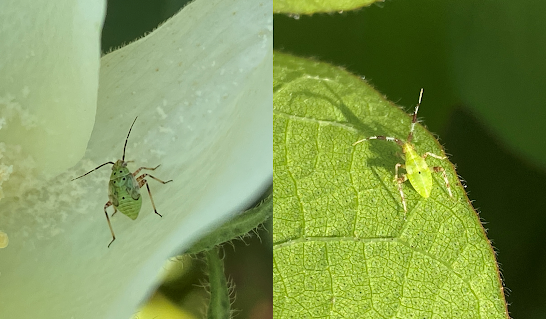Overall, although the crop is LATE is looks pretty good in most places. Cotton that was planted on time looks like it has very good potential. Widespread rains have slowed down, but we are starting to deal more with random. Pop-up showers. While this is good for the crop, it complicates insect control. We have started getting questions about the rainfastness of insecticides. Unfortunately, there is no one-size-fits-all for this question.
Things to consider:
1.
How much time occurred between the rain
and the spray? For most products, more time is better. Most products are
probably “good” at 4 hours, but 6 is better. Note: acephate is the least
rainfast material and needs a minimum of 8 hours with 12 hours being better.
2.
How hard did it rain and how much fell? More
rain will have a greater impact than less rain. A hard, driving rain will
probably be worse than a slower, steady rain. In other words, a half inch in 30
minutes will probably be worse than a half inch in 3 hours.
3.
What type of insecticide was used?
Systemic insecticides will probably not be impacted as bad as contact
insecticides. Most systemics need between 2-4 hours to move into the plant.
However, most of our “bug materials” tend to be contact. Although most contact insecticides
are not very rainfast, insects can come into contact with them quickly and have
enough exposure to die within a few hours of the application. Formulation type
is another consideration. Generally speaking, dry materials (e.g. Acephate,
Transform) are more susceptible to wash-off than liquid materials (e.g.
bifenthrin, Bidrin).
4.
What is the target insect? Mobile
insects, like adult stink bugs, are more likely to quickly come into contact
with insecticides. Insects that tend to stay in more protected areas, like
plant bug nymphs hidden behind square bracts, are less likely. Thus, residual
is more important if the insects move less.
5.
Was an adjuvant used? Adjuvants may
help in some cases, but they are unlikely to “fix” the issue with a material
like acephate that already has poor rainfastness.
With all this being said, whether to wait on a treatment or
to try to beat a rain can be complicated and probably made on field-to-field
basis. How much rain is predicted, how long after the rain can the sprayer get
across the field and how high the insect pressure is should all be considered.
For example, stink bugs are not difficult to control, so maybe waiting the rain
out is an option. However, if high populations of immature plant bugs are
present, I would consider treating before the rain and risk a wash off with
partial control than risk not being able to treat for a week if I don’t have
access to a plane and the field is too wet.
 |
| Tarnished plant bug nymph (left) vs clouded plant bug nymph (right). |
Cotton Insects: Plant bugs are becoming more consistent in fields across the state with clouded plant bugs (CPB) making up a higher percentage of the population than usual. For cotton in bloom, scouting for plant bugs is best with black drop cloths. While this is time consuming and laborious, it is the best way to find immature plant bugs. Other ways are to look for dirty squares and dirty blooms as incidences of plant bug feeding. Threshold is an average of 3 tarnished bugs per 5 row feet. Clouded plant bugs should be counted at 1.5 tarnished plant bugs. In other words, a threshold of CPB only would be 2 per 5 row feet. This is because CPB cause a little more damage than tarnished plant bugs. Also, CPB prefer to feed on small (thumb-sized) bolls. Observations from scouts and consultants last year suggest that organophosphates (Bidrin, Orthene) provided better control than pyrethroids for CPB. We covered insecticide selection for tarnished plant bugs in our last post (link).
 |
| Thumb-sized bolls are the preferred feeding site of CPB. |
Soybean Insects: Overall, soybeans have been quiet
this year, but we have started getting reports of defoliators in fields. We
have received scattered reports of soybean loopers but none reaching threshold
yet. For now, our focus should be on stink bugs in soybeans beginning to fill
pods (R4-R5). Threshold is 4 stink bugs per 25 sweeps.
As always, if we can ever be of any help, or if you would
like to provide input on the situation in your area, please don’t hesitate to
reach out to your local Extension Agent or myself (Scott Graham: 662-809-3368)
and Ron Smith (334-332-9501). For more information on thresholds and
insecticide recommendations, visit the Alabama Cotton IPM Guide (IPM-0415). To
stay up-to-date on the Alabama cotton insect situation, subscribe to the
Alabama Cotton Shorts Newsletter,
Alabama Crops Report Newsletter and Podcast,
and the Syngenta Pest Patrol Hotline.
